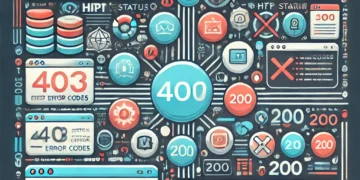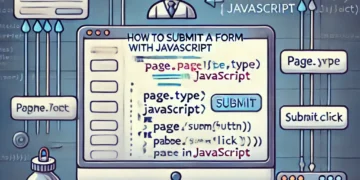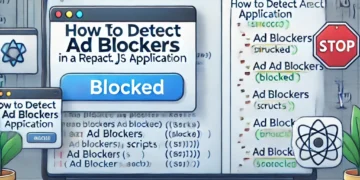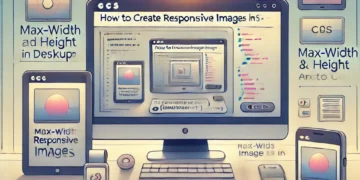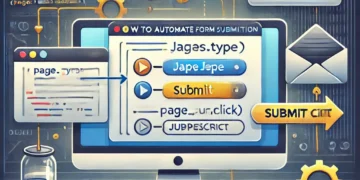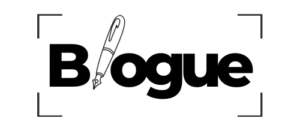Frontend frameworks are the pioneer blocks of the software development process. But there are so many options to choose when it comes to building visually appealing apps that rank high on user experience.User experience is the number one priority for every business in the market today. As a developer, even the brief you get on your project talks about the simplicity of the user interface it is supposed to feature. No matter how complex functions and operations happen in the background, what users see and experience has to be seamless. That is the principle some of the most successful companies operate on- Netflix, Facebook, Instagram, etc.Take any of these websites, and you will find they are powerful, simple, and have a brilliant user interface. All thanks to the myriad of frameworks running under the hood. However, with the increasing demands of customers and the market, there is a constant need to push the quality in terms of usability and functionality. That’s when concerns start popping up.
React, Angular, and Vue are most popular among developers, which makes them the top three frontend frameworks of 2020.I was looking into the recent State of JavaScript survey of 2019. It was interesting to see the results that they have gathered regarding frontend frameworks. React seems to have an overwhelming positive response from developers and stands as number one. Compared to the previous years, Vue seems to have caught up, and ranks as number two. It has replaced Angular’s position. Although Angular ranks as the third most used framework, it seems to have gained a lot of negative sentiment from the developers.
1. React
React has continued to rise in popularity over the years and has been consistently ranked as the most used and favorite JavaScript library for building frontend applications. The rise of React, is impressive and as an early adopter of React, I am and excited for its growth.
React Features and Road Ahead:
- React Hooks – This was the biggest addition to React in 2019. Many development teams have adopted hooks in their codebase now. And if you haven’t heard of hooks or used them yet, it should be on your radar in 2020. Hooks have made learning React easier, and helps in writing React components, without the use of classes. To learn more about React Hooks you can read our blog post below:
- What’s new in React – React Hooks
- New React Dev Tools – The react dev tools are awesome and super useful during development and debugging. React recently released a new and upgraded version of the react dev tools. With this release it is available across Chrome, Firefox and Edge. This new version has significant performance gains and an improved navigation experience.
- If you haven’t upgraded yet, you can learn all about it here: New React Dev Tools Post
- React Concurrent Mode and Suspense – This is still an experimental release, and we hope it will be a stable release sometime in 2020. Concurrent Mode is a set of new features that help React apps stay responsive and gracefully adjust to the user’s device capabilities and network speed.
- React Native – Hermes Engine for Android – The biggest feature that was introduced in 2019 for React Native was the Hermes Engine. This was an architectural upgrade that was done to improve React Native’s performance in Android devices significantly. Before this, React Native was not very well optimized for Android devices. But with the Hermes engine, React Native works optimally on both iOS and Android. This is predicted to be a huge win for React Native in 2020.
If you are a React developer, your job prospects are going to be highest in the frontend developer market. With the rising popularity of React, many enterprise companies are also moving toward re-writing their frontend using React. This is going to create plenty of jobs for React developers. In the mobile world also, React is trending with the availability of React Native. The benefits of knowing React can be translated to both web development and mobile development jobs.
When to use React:
React is used for building the user interface, especially when you want to develop single-page applications. It is the most robust frontend framework when you want to develop an interactive interface with less time since you can reuse the components.
2. Vue
2020 is a big year for Vue. Vue has been trending ever since it was introduced. It has all the good aspects of both React and Angular. In 2019, many companies started to adopt Vue to build their frontend applications. One of the most popular front-end frameworks nowadays, Vue is a simple and straightforward framework. It is good at removing the complexities that Angular developers face. It is smaller in size and offers two major advantages – visual DOM and component-based. It is also a 2-way binding.
Vue is versatile, and it helps you with multiple tasks. From building web applications and mobile apps to progressive web applications, it can handle both simple and dynamic processes with ease.
Though it is built to optimize app performance and tackle complexities, it is not widely popular among market giants. However, Alibaba, 9gag, Reuters, Xiaomi are users of this framework. Vue continues to grow in terms of adoptions despite fewer takers from Silicon Valley.
When to use:
Vuejs is recommended for flexible design structures. It lets you design everything from scratch and is successful in developing giant projects as well.
When not to use:
If you think the support community would be there to answer the complexities, Vuejs is not the right path to go. Also, the applications requiring stable components aren’t suitable to be built with Vuejs since the framework has shown problems with the stability of components.
3. Angular
Angular is widely used to build frontend applications in both small sized companies and large enterprises. But its popularity has been decreasing over the years. A lot of the recent feedback from developers about Angular has not been great. I have personally not used Angular, and some of my thoughts on it may come from surveys and online forums but not based on real experience.Angular is a full-blown framework and not a flexible framework like React. It has everything built-in within it. This is something many developers do not like. Developers like to explore various tools and libraries to solve problems. But Angular being opinionated, it does offer the developers the flexibility that other frameworks provide.

When to use Angular
Angular augments the performance of browser-based applications by dynamically updating the contents in no time since it uses two-way data binding. For enterprise based applications and dynamic web apps, using Angular is the best bet.
Others:
Preact
Preact is a JavaScript library that is branded a faster 3kB alternative to React JS that uses the same modern browser API with structures like components and a virtual DOM. More than 18,000 projects use Preact, and it has nearly 25,000 stars on GitHub.
Preact has experienced a good level of growth since last year, with retention rate up to 9 percent from 6 percent last year. Awareness has also risen; the number of people who have not heard of the library fell from 28 percent to 24 percent in the last 12 months.
Ember
Ember is an open-source JavaScript web framework that is based on the model-view-view-model pattern. It allows developers to create scalable, ambitious single-page web applications by incorporating common idioms and best practices into the framework.The survey revealed an increased interest in Ember over the past 12 months, with the percentage of people who were not interested in Ember falling from 67 percent to 64 percent.
Svelte
Svelte is a radical new approach to building user interfaces. Whereas traditional frameworks such as React and Vue do the bulk of their work in the browser, Svelte shifts that work to a compile step that happens when you build your app. Instead of using techniques such as virtual DOM diffing, Svelte writes code that surgically updates the DOM when the state of your app changes.
This year, Svelte became one of the top six JS frontend libraries, with nearly 45 percent of developers indicating an interest to learn it. The report’s authors also named Svelte the winner of its “Prediction Award,” recognizing the library for its “explosive debut” in 2019.
Jquery
Introduced in 2006, jQuery is one of the earliest frontend frameworks. Despite its launch date, what makes it stand out is its relevance even in today’s tech world. Not only does jQuery offer simplicity and ease to use, but it also minimizes the need to write extensive JavaScript codes.
Thanks to its existence for years, there is a considerable jQuery community for the solutions.
Fundamentally a library, jQuery is used to manipulate CSS and DOM and to optimize the functionality and interactivity of a website.
Backbone
One of the easiest frameworks out there, Backbonejs allows you to develop single-page applications swiftly. It is a framework which is based on the MVC architecture. Similar to a Controller, MVC architecture’s View allows the implementation of component logic.
Besides, this framework can also run engines like underscore.js and Moustache. When developing applications with Backbonejs, you could also use tools like Thorax, Marionette, Chaplin, Handlebars, and more to make the best use of the framework.
Semantic-UI
Despite being a newcomer in the frameworks arena, Semantic-UI quickly is on its way to becoming one of the most popular front-end frameworks across the globe. What makes it stand out is its intuitive user interface and simplicity in terms of functionality and usability. It incorporates natural language, making codes self-explanatory.
It means that freshers who are relatively new to the coding scene can quickly grasp the framework. Besides, it also allows for a streamlined development process thanks to its integration with tons of 3rd party libraries.
Conclusion
All these frameworks are built on top of JavaScript. In addition to the programming languages and its mastery, design and architecture plays a very important role. Learn the skills that won’t ever lose its value. Learn design principles, algorithms, architectural patterns, clean coding methods, and general coding practices. These will come a long way in your career,For all the valuable insight the survey generated, one glaring gap remains: a lack of female developers lending their perspective. Of the roughly 21,000 respondents, only 1,155 — about 6 percent — were female. Unfortunately, this may be reflective of the JavaScript developer ecosystem overall, and it needs to change.







